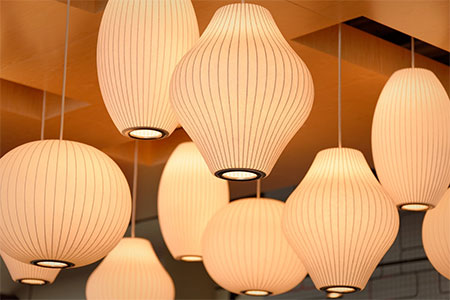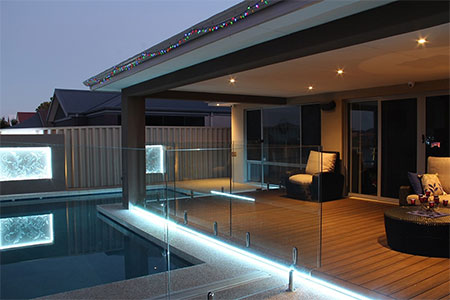3 Major Types of Lighting for Interior Use
This article seeks to highlight some of the basic types of lighting and illumination, their features and uses.
28/08/2019
Lighting otherwise called illumination, refers to the deliberate or intentional use of light to attain practical or aesthetic effects. This though is a more uncomplicated and more straightforward meaning of lighting.
According to physicists, lighting refers to the electromagnetic radiation with wavelength ranging from 370 to 960cm that is visible to the human eye.
The illumination system has also experienced tremendous changes in term of the evolutionary process from the use of the natural sun and moon to the use of fire, then to sticks coated with coal, candlesticks, lamps and electric bulbs.
Humphry Davy invented the first electric light in the year 1802. His design was known as the electric Arc lamp, and he did this by connecting wires to the battery and a piece of carbon. His plan had a significant shortcoming as the light was too bright and unusable; also, it didn’t last long.
In 1879, Thomas Alva Edison invented the first commercially practical incandescent light. Ever since light has evolved even more to meet specific desires and needs, this article, thus, seeks to highlight some of the basic types of brightness, their features and uses.
1) Ambient lighting( indoor)
This type of brilliance is also known as general lighting, and its intended use is to lighten up a room and its entirety. It gives a uniform level of illumination throughout the room or space, independently of other light sources. When used appropriately, It creates a fantastic environment for relaxation, especially when you had a stressful day. Also referred to as mood brightness, it can be right for having a warm conversation with an old friend. In recent times, some yoga studios have begun using ambient lighting in their classes to help draw stress from the body. Aside from this usefulness, general brightness creates enough light for you to see and move around safely and comfortably. Ambient indoor brilliance can be provided using the following fixtures; Chandelier, ceiling-mounted fixture, wall-mounted fixture, track light, floor lamp, table lamp etc.
Ambient lighting (outdoor): Outdoor lighting is often installed to ensure visibility and increase security around a house or building. It is very recommended to light up the exterior of buildings, stairs and entrances to eliminate or reduce the risk of injuries that can occur from entering or exiting the building. Fixtures that provide ambient outdoor brilliance includes spotlight, hanging fixture, garage and canopy brightness, post lantern, wall lighting, recessed fixture used in overhanging structures.
2) Task lighting
As the name implies, this type of brilliance is used when engaging in more specific tasks. It is a smaller, more concentrated light. This type of flame helps you when participating in particular projects such as cooking, writing, reading, sewing and many other things. Task brightness gives a pleasant illumination for the tasks a person carries out in a particular space.
This type of flame helps to stimulate your brain naturally. This light system allows you to be more alert and concentrated. It enables you to create higher quality results as you see more details as you work. Many offices and organizations often opt for task brilliance because of this advantage. It reduces glare and prevents eye strain.
Various factors come into play when selecting the right task light. These factors include the work you need it for and your age. As a person gets older, they need more light and are sensitive to glare, making a quality task lighting very important. Depending on these factors, an efficient task light should provide about 268 to 1075 lumens or 50 to 100 watts to a workplace.
This kind of flame can be created using a
variety of sources such as overhead sources like
track lighting or recessed lighting as well as
task or desk lamps. These lamps should be
adjustable to keep the light on the work and out
of one’s eyes.
Halogen bulbs are suitable for
task lighting because they produce white light
similar to daylight and also requires less
energy than incandescent bulbs. LED lamps are
also good sources of task lighting because they
create a bright direct light that won’t get that
when you are working for long hours.
3) Accent lighting
This type of brilliance is used to create a focal point. It develops upon the ambient brightness of a room by giving dimension draws attention to a feature like a unique design element, a piece of artwork or a plant to highlight a wall texture or decorative covering. Accent light is a way of adding drama and style to your home. It is a type of brightness that creates a very sophisticated atmosphere. It gives feelings of meaning and importance to the images it displays.
This type of brilliance is used a lot for art shows, museums and historical buildings. When efficiently done, accent lighting draws one’s attention to the object or feature without drawing your attention to how it’s being lit.
In conclusion, when lighting up your room, office space or house, it is better to first start with the overall lighting system, then to the more specific ones.





